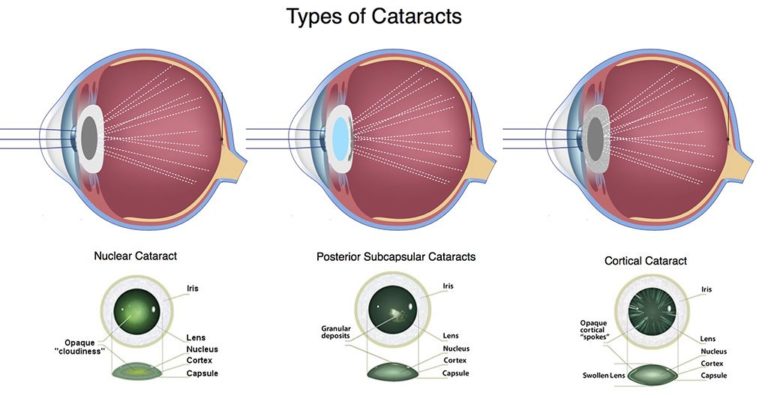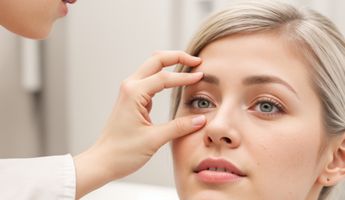Cataract Surgery in United States
Find the best clinics for Cataract Surgery in United States
With Medijump you can browse 1 facilities offering Cataract Surgery procedures in United States. The cheapest price available is $2,000 in Los Angeles. And for the cheapest price globally, prices start from $159 in South Korea.
Cataract Surgery in Los Angeles
Price: $ 2,000
South Korea offers the best prices Worldwide
Price: $ 159
NV Eye Surgery, can be found in Pasadena, Los Angeles, United States and offers its patients Cataract Surgery procedures as well as 1 other procedures, across 1 different procedure categories. The price of a Cataract Surgery procedure varies from $2,000 to $3,500, and the average price is around $2,000. A small team of medical professionals undertake all procedures at the Clinic, with 2 in total, and NV Eye Surgery is accredited by just one known accreditations institute, AAAASF - American Association for Accreditation of Ambulatory Surgery Facilities
WHY US?
At Medijump, we're making medical easy. You can search, compare, discuss, and book your medical all in one place. We open the door to the best medical providers worldwide, saving you time and energy along the way, and it's all for FREE, no hidden fees, and no price markups guaranteed. So what are you waiting for?

Free

Best Price

Widest Selection

Risk-Free
What you need to know about Cataract Surgery in United States

Cataract surgery in United States is a common procedure carried out by highly experienced ophthalmologists. This outpatient operation is performed when the natural lens of the eye, which is usually transparent, develops a cataract. The cataract causes the lens to become cloudy, resulting in blurry or desaturated vision. Surgery is necessary when the cataract severely affects your daily activities or your ability to work.
During the procedure, the surgeon removes the cloudy lens and if necessary, replaces it with an artificial clear lens called an intraocular lens (IOL). Modern techniques mean that the entire procedure can typically be performed under local anaesthetic with patients experiencing little to no discomfort. Cataract surgeries in United States are renowned for their high standards of care and success.
What is the cost of Cataract Surgery in United States?
The cost of cataract surgery in United States can vary, depending on several factors. These may include the technology used during the procedure, the type of IOL implanted, the specific diagnostic tests carried out preoperatively and the surgeon's expertise. However, cataract surgery is generally covered by most insurance plans under medically necessary procedures.
It is advised to consult with your healthcare provider or insurer for a precise cost estimate. Remember, an accurate cost estimate should cover all aspects of the procedure, from the consultation and diagnostic tests to the surgery itself and post-operative care.
What does a Cataract Surgery Procedure Involve?
The cataract surgery procedure typically involves a skilled ophthalmologist creating a small incision in the cornea, the clear front part of the eye. Tiny instruments are then used to break up the cloudy lens, which is then removed. An artificial intraocular lens (IOL) is inserted to replace the natural lens.
The surgery generally takes about 30 to 45 minutes. It is usually performed under local anaesthesia that numbs the eye, so the patient stays awake but feels no pain. The procedure can be carried out on an outpatient basis, meaning that patients can go home the same day after a short recovery period in the clinic.
How Long Should I Stay in United States for a Cataract Surgery Procedure?
If you're travelling to United States specifically for cataract surgery, it's advisable to plan for a stay of at least two to three days. This time allows for the pre-operative assessment, the day of the surgery, and a postoperative check-up before travelling home.
Staying a bit longer provides time for the eye to start healing and allows for a follow-up examination to ensure everything is well. It is always essential to discuss staying duration with your healthcare provider before making any arrangements.
What's the Recovery Time for Cataract Surgery Procedures in United States?
Recovery times for cataract surgery procedures vary from person to person, but typically, patients notice an improvement in their vision within a few days of the procedure. However, full healing can take about a month.
During the first few days post-operation, the eye may feel itchy and sensitive. It is also common for a mild burning sensation or grittiness to be experienced. Patients are advised not to rub the eye and to use the prescribed eye drops to help with the healing process and reduce inflammation. Complete visual results and the settling down of any post-operative symptoms could take from several weeks to a few months.
What's the Success Rate of Cataract Surgery Procedures in United States?
The success rate of cataract surgery procedures in United States is very high, similar to other developed regions. As a mature and well-established procedure, the percentage of patients with significantly improved vision following cataract surgery is greater than 95%.
However, as with any surgical procedure, there are risks associated. These risks mainly involve infection, bleeding, inflammation, detachment of the retina, pressure changes in the eye and sometimes light sensitivity. Most of these complications are extremely rare and can be managed effectively if they occur.
Are there Alternatives to Cataract Surgery Procedures in United States?
While there is no definitive alternative to cataract surgery, there are some possible management strategies to delay the operation. These may include:
- Changing eyeglass prescription, sometimes the nearsightedness caused by cataracts can initially be corrected with glasses
- Using a magnifying lens for reading
- Enhancing lighting conditions at home or workplace
- Using anti-glare sunglasses or brimmed hats outdoors
However, these alternatives only address the symptoms rather than the underlying cause, the cataract itself. Once the cataract impairs the quality of life significantly, surgery will likely be recommended. Make sure to discuss the best course of action with your healthcare provider.
What Should You Expect Before and After the Procedure
Before the cataract surgery, your ophthalmologist will perform a comprehensive eye examination to measure the size and shape of your eye. This information is necessary to choose the right type of IOL.
After the surgery, you can expect your vision to begin improving within a few days. Your vision may initially be blurry as your eye adjusts to the new IOL. You may also experience soreness or itching in the eye, but this should subside within a few days.
What sort of Aftercare is Required for Cataract Surgery Procedures in United States?
Aftercare is vital for a successful cataract surgery outcome. You will be prescribed eye drops to prevent inflammation and infection. These must be used according to the prescribed schedule. It's essential to prevent anything from bumping into your eye or any unnecessary pressure.
Follow-up visits will be scheduled to monitor your healing process. Patients are usually instructed to wear a protective eye shield while sleeping for a week or so after surgery. Activities like reading or watching television can resume soon after surgery, but strenuous activities or heavy lifting should be avoided for several weeks.
Can I have both eyes operated on at the same time in United States?
While it is medically possible to perform cataract surgery on both eyes at the same time, it's not the usual practice in United States or in most places worldwide. The wait between surgeries for the second eye is usually one to two weeks.
This is to reduce the risk of potential complications affecting both eyes simultaneously and to ensure the first eye is healing well. However, the decision ultimately depends on the patient's condition and the surgeon's discretion.
Will I need to wear glasses after Cataract Surgery in United States?
Whether you'll need to wear glasses after cataract surgery depends on the type of intraocular lens (IOL) you choose and the accuracy of the IOL power prediction. Monofocal IOLs often require the patient to use reading glasses for close work, while multifocal or accommodating IOLs can reduce or even eliminate the need for glasses.
However, you may still need glasses for certain activities, even with the more advanced IOLs. Also, if there is residual refractive error after the surgery (astigmatism, nearsightedness, or farsightedness), glasses might be required. You should discuss these details with your ophthalmologist.
Will I be awake during Cataract Surgery in United States?
Yes, you will be awake during cataract surgery. However, don't let this concern you. The procedure is generally performed under local anaesthetic, so you won't feel any discomfort. Your eye will be numbed, and in most cases, you might receive a mild sedative to help you relax.
The process is swift, usually taking between 20 and 30 minutes, and you won't see the details of the surgery. You might see light and movement, but you won't observe the surgical procedure itself. Before the surgery, your doctor will discuss the procedure and answer any questions, so you'll know what to expect.
Whilst the information presented here has been accurately sourced and verified by a medical professional for its accuracy, it is still advised to consult with your doctor before pursuing a medical treatment at one of the listed medical providers
No Time?
Tell us what you're looking for and we'll reachout to the top clinics all at once
Enquire Now

Popular Procedures in United States
Prices Start From $3,600

Prices Start From $700

Prices Start From $317

Prices Start From $127

Prices Start From $1,965

Recommended Medical Centers in United States for Cataract Surgery

- Interpreter services
- Translation service
- Religious facilities
- Medical records transfer
- Medical travel insurance
- Health insurance coordination
- TV in the room
- Safe in the room
- Phone in the room
- Private rooms for patients available

- Interpreter services
- Translation service
- Religious facilities
- Medical records transfer
- Medical travel insurance
- Health insurance coordination
- TV in the room
- Safe in the room
- Phone in the room
- Private rooms for patients available

- Interpreter services
- Translation service
- Religious facilities
- Medical records transfer
- Medical travel insurance
- Health insurance coordination
- TV in the room
- Safe in the room
- Phone in the room
- Private rooms for patients available

- Interpreter services
- Translation service
- Religious facilities
- Medical records transfer
- Medical travel insurance
- Health insurance coordination
- TV in the room
- Safe in the room
- Phone in the room
- Private rooms for patients available

- Interpreter services
- Translation service
- Religious facilities
- Medical records transfer
- Medical travel insurance
- Health insurance coordination
- TV in the room
- Safe in the room
- Phone in the room
- Private rooms for patients available

- Interpreter services
- Translation service
- Religious facilities
- Medical records transfer
- Medical travel insurance
- Health insurance coordination
- TV in the room
- Safe in the room
- Phone in the room
- Private rooms for patients available

- Interpreter services
- Translation service
- Religious facilities
- Medical records transfer
- Medical travel insurance
- Health insurance coordination
- TV in the room
- Safe in the room
- Phone in the room
- Private rooms for patients available

